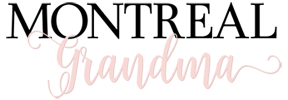
24 Jul Looking After The Bone Bank
By: Natalia Moore
The human skeleton consists of a range of articulating bones to support our bodies, to allow movement and to protect all vital internal organs.
Bones are living tissues that are constantly changing, new bone is built and old bone is replaced. One of the two main components of bone is calcium, which is used to build new bone and helps to provide strength for bones.
Some researchers have made a bank analogy regarding calcium reserves in the bones. This analogy assumes that bones represent the bank account and calcium represents the currency. About 99 percent of calcium in our bodies is stored in our bones. Calcium withdrawals and deposits occur every day in a person’s life.
Making daily calcium deposits (eating calcium-rich foods) is not enough to have healthy bones. To ensure strong bones we also need to do regular weight-bearing exercises (like walking) and the hormone oestrogen for women and testosterone for men.
Amounts of calcium are removed daily from our bodies. If diet and exercise benefit calcium levels your diet is low in calcium, your body withdraws calcium from the bone bank and it deposits less calcium. Drinking coffee, tea, cola drinks and alcohol increases withdrawals of calcium because they force the kidneys to flush calcium out of the body.
To build healthy bones and to maintain strong bones we need to be alert and aware during our entire lives. If you want to protect your bones from developing osteoporosis, make sure that you keep a strong calcium savings account.
DEVELOPING OSTEOPOROSIS
Calcium amounts in bones reach a peak during the late teens and early adulthood. Our bones are at their highest level of strength during that period of time. When we reach about 35 years of age, our bodies with draw more calcium than what is deposited; our account begins to go into the red.
Women experience a further handicap because when reaching menopause their levels of oestrogen fall dramatically. This event leads to an even higher withdrawal of calcium from their bones. This situation can lead to osteoporosis, where bones become thin, weak and brittle. The result is a higher probability of breaking bones. Osteoporosis is a silent thief of your calcium. Usually the first sign is a bone which is fractured or broken.
RISK FACTORS
There is no certainty about who will develop osteoporosis. However, your risk is much higher if two or more of the following factors apply to you:
Risk factors you can change:
- Eating little calcium in your diet;
- Exercising less than three times a week;
- A high intake of alcohol;
- Smoking.
Risk factors a health practitioner can advise:
- An early menopause or removal of the ovaries;
- Interruption of the menstruation (other than pregnancy) e.g. during strict dieting or heavy physical training;
- Long-term use of steroids .
- Certain medical conditions such as rheumatoid arthritis and thyroid disease.
Risk factors you cannot change:
- Being Caucasian (white skinned) or Asian;
- Being thin and small boned;
- Your mother or grandmother has had fractures or developed a very stooped posture.
HOW TO PREVENT OSTEOPOROSIS
There are a number of preventive measures you can take to increase the health and strength of your bones:
- Eat a healthy diet including lots of calcium-rich foods
- Do regular weight-bearing exercises
- Quit smoking
- Moderate your alcohol intake
- Maintain regular menstrual periods or normal hormone levels.
Natalia Moore is a dietitian, researcher and blogger at Life Tips. She loves nothing more than sharing health and diet tips with others, such as 7 day fruit and vegetable diet, 14 day diet eating plan and ways to get back on track with diet.


No Comments